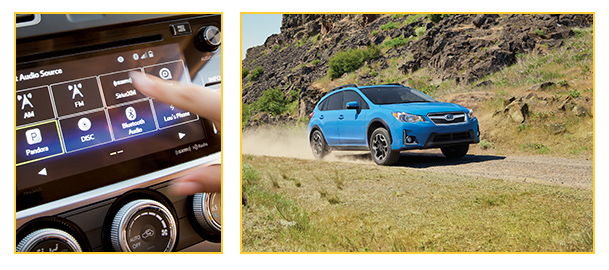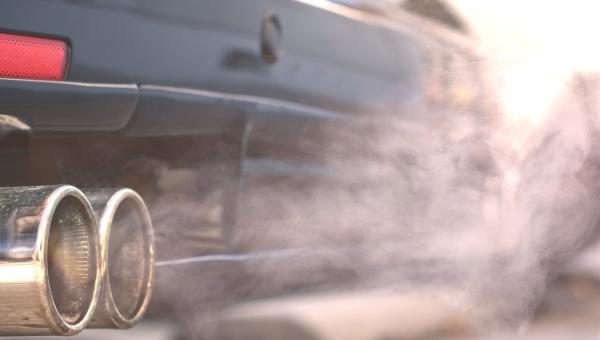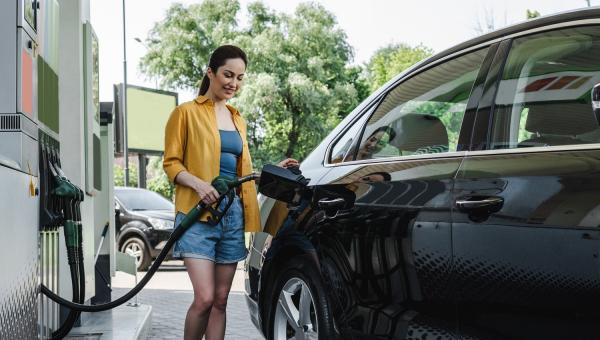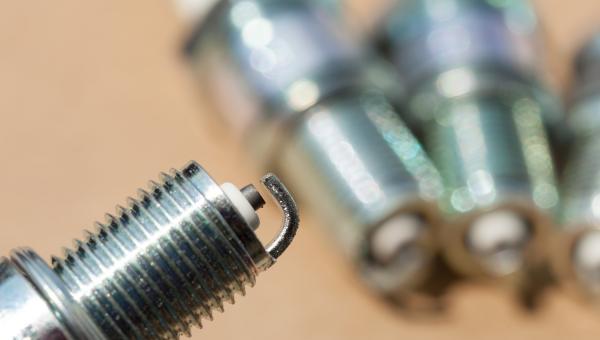Test Drive Notes Library
-
 Pros
Pros
- Easy to live with. It’s a versatile, compact, all-wheel-drive vehicle with a higher seating position that’s easy to drive and maneuver. Subaru seems to be inheriting Honda’s approach; practicality and usability uber alles.
- Gas mileage. The Crosstrek is EPA rated at a very good 29 mpg overall. 26 city, 34 highway. We got about 27 in more stop and go city than highway driving.
- Simple, airy interior. It feels large for the car’s small exterior footprint. The space is allocated to passengers and skimped on, a bit, in the cargo area, but that’s probably how most of us would prefer it. There’s even pretty good headroom up front. Sometimes, altitudinally-challenged fans ask us to recommend a car in which they won’t scrape their noggins. We often recommend the Crosstrek’s sibling, the Forester. But the Crosstrek isn’t bad either.
- Price is right. Even with all-wheel drive, and the latest safety equipment including blind spot monitoring (Subaru’s $3,000 EyeSight package comes with automatic pre-collision braking), the Crosstrek feels reasonably priced for what you get. Our test Crosstrek 2.0 Limited with all that stuff stickers at $28,840.
- Decent visibility. It’s not as good as Subaru’s Forester, but you don’t feel like you’re in a cave either, like you do with many of today’s crossovers. It has a large front windshield, good-sized side windows, and nice, big rear view mirrors. Visibility out the back window is not too bad, either, although rear side visibility is limited.
- Easy to get in and out of. The seat height and large doors make getting in and out of the Crosstrek a snap.
- Nice, simple ventilation controls. No adult education course required to turn the temperature up or down.
- We love Subaru’s little “beep beep” notification when a car in front of you has moved. So if you’re stopped at a light, and you’re daydreaming (or texting with your bookie), when the car in front of you moves, the Crosstrek alerts you -- before the guy behind you in the Freightliner alerts you by sitting on his 400dB horn.
- Subaru's reputation for durability. It’s unlikely to be quite as repair-free as a Honda or Toyota, but with a reasonable amount of care and feeding, Subarus often last 150,000 miles or more.
-
 Cons
Cons
- The CVT. The continuously variable transmission obviously contributes to the good gas mileage (3 mpg more than the same car with a 5 speed manual). But we found it to have a rubber-bandy feel sometimes at very low speeds, and brings on the engine noise when you really mash the pedal. But at modest speeds around town, it's great.
- Noisy interior. The engine noise and road noise are pretty constant companions. You’ll make regular use of the volume knob on the entertainment system.
- Handling is appliance-like. Good quality appliance like, but not what anybody would call sporty. We felt confident driving it. But steering is pretty numb, and the higher ground clearance makes it lean a little more in corners than the Impreza it’s based on. The rear suspension, in particular, occasionally plonked back down after hitting bumps or speed bumps. However, most people will just like how easy it is to drive and maneuver in the course of their normal, every day driving life—most of which takes place on suburban and urban streets, and not on twisty backroads at high speed.
- Fundamentally, it’s a raised up, more rugged looking Impreza. While the Impreza handles a bit better, and comes a little cheaper, lots of people want the crossover body style now, with the more rugged look and higher seating position. Just know you’re paying a premium for it.
- Why do Subaru’s doors always feel so light, compared to other cars? Obviously, they're safety is tested and well-rated, so they do the job. But they always feel tinny when you open and close them. It’s a mystery.
Test Drive Notes Library
Get the Car Talk Newsletter
 Pros
Pros Cons
Cons


